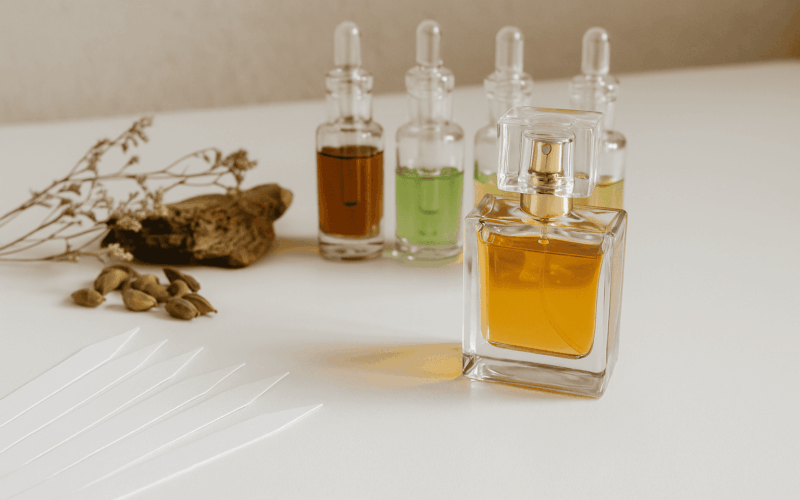The first spark of a future fragrance can emerge anywhere: in a noisy Naples café, on a twilight beach in Yokohama, or at a desk in an old library that smells of leather bindings. A perfumer catches a moment and stores it—not yet in words or formulas, but in emotion. This emotional outline becomes the heart of the future blend. That’s how the journey begins, one rarely visible to the customer. We experience the result—a few drops on the wrist—but rarely hear the story sealed behind the glass.
What sets niche perfumery apart is its freedom—from shareholders and focus groups. The creator doesn’t have to please the masses, so risk becomes part of the formula: adding damp cedar, dark rum, or a metallic note of blood. Risk is the fuel of an independent brand. But behind every romantic narrative lies craft: a clear method, dozens of draft formulas, internal deadlines, and complex sourcing negotiations.
The spark of an idea: where the concept is born
A fragrance idea rarely starts with “I want lavender and vanilla.” It’s more like a scene from an internal movie. A creative brief captures the mood: color, temperature, rhythm. For instance, perfumer Joan Tan describes her vision as “dusty sunlight on red rooftops and caraway bread.” The next step is translating that into scent molecules. The sharper the emotional cue, the easier it is to find the right accords. If the commission is a limited edition for an art show, the brief may include a music playlist and a Pantone palette to align the team emotionally.
Most niche houses work with tiny teams: the perfumer, a creative director, sometimes the brand owner. Decisions are fast, but so is the weight of accountability. A conceptual error may surface a year later—on store shelves. That’s why this “air reading” phase can take months, until everyone hears the same inner harmony.
The journey of an ingredient: from field to lab
After concept comes logistics. Choosing ingredients is both an ethical and artistic process. A note of saffron may require absolute sourced from Kashmir in October; an ozone note might demand a high-purity synthetic. Suppliers send samples labeled with harvest codes. The perfumer smells them like a sommelier—balancing character and consistency. Sometimes the best saffron is too costly or variable. That’s when a hybrid is born: a tail of natural oil, anchored with saffraline isolate, reinforced by synthetic molecules for consistency across batches.
Natural extracts need rigorous screening. A lab will request a chromatogram, a test that flags pesticides or phthalates. A niche brand often values reputation over margin—if the result isn’t pristine, the material is rejected. This strictness adds to the cost, but allows labels to write “100% traceable” with confidence.
The lab’s alchemy: turning molecules into harmony
The lab smells like a library of scents: hundreds of coded vials. The perfumer works in pyramids but thinks in diffusion vectors. They know how quickly lemon oil rises from warm skin in July, or how long cinnamon bark lingers. The first formula often includes up to 60 components. Then come the “short” formulas—trials with 2–3 elements removed to test their contribution.
Testing is done on blotters and diverse skin types; assistants lend their wrists under signed waivers. One sign of success is silence—when five minutes pass and no one finds anything off. Once the formula is stable, a pilot maceration is made: 500 ml of concentrate filtered cold and left to rest for a week. This lets the molecules “marry” and reveal the fragrance’s true personality.
- some notes blur and lose volume
- others move forward
- some disappear entirely and must be replaced
This is how a final formula is born, but the journey is far from over.
From test tube to shelf: design, bottle, and story
A scent without a story is like a book without a cover. The brand seeks a visual language: glass texture, wall thickness, liquid hue. A bottle designer works on a 3D prototype, discussing shoulder angles and cap weight. The goal is to reflect the scent’s soul without sacrificing ergonomics. Niche perfumery values tactility: a silk label, a cap made of reclaimed wood, hand-engraved etching.
Meanwhile, the formula is registered with IFRA and markets are chosen. Some countries strictly limit concentrations of ethyl isoeugenol; others require allergen labeling. Each tweak to the tech sheet demands another stability test. Bottles are shaken at 45°C for two days, scanned for clarity and leaks.
Finally, the story is told to the world. A copywriter writes a legend of dusty light, an illustrator creates a poster, and a brand ambassador rehearses their launch speech. It may look romantic, but it’s built on hundreds of micro-decisions. If you want to know how to sort and build a collection so each bottle shines at the right time, check out our guide “How to build a balanced fragrance wardrobe”
Questions and answers
Anywhere from six months to three years, depending on formula complexity, ingredient sourcing, and regulatory timelines.
Rare ingredients, high production costs, and a desire to maintain exclusivity often limit quantities.
Yes, but expect a higher price. Custom scents take months to develop and require one-off sourcing of unique materials.

